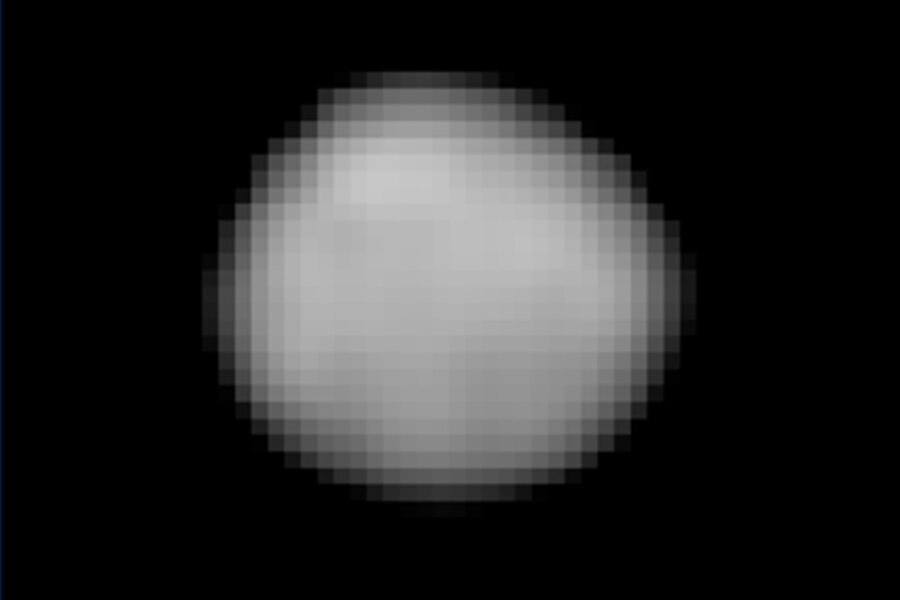Pallas: Huge asteroid visible from Earth
Loading...
This week, the huge asteroid Pallas reaches opposition, being opposite to the sun in Earth's sky, making it a prime target for avid skywatchers with telescopes.
Asteroids are not as well behaved as planets, and their orbits are often far from the plane of the ecliptic. This is clearly the case with Pallas, because it reaches opposition in the unlikely constellation of Serpens Caput, very close to Corona Borealis, the Northern Crown. This is a pretty circlet of stars just to the left of Arcturus in northern hemisphere skies.
To spot Pallas tonight, look for the brightest star, called either Alphecca or Gemma, in Corona Borealis. Pallas is an 8th magnitude object just south of this star. [How to spot Pallas.]
If you make a sketch of the star field with binoculars tonight and repeat this over the next few nights, you'll clearly see which "star" is moving: This is the best way to identify an asteroid. Alternatively, use planetarium software to make a chart of the area of Corona Borealis and identify Pallas from that. Binoculars or a small telescope are essential for spotting this faint object.
Pallas is the second largest asteroid, 326 miles (524 km) in diameter. Or is it? Vesta might dispute this claim for, although it's slightly smaller in diameter at 318 miles (512 km), it is much more massive due to a much higher density.
Legacy of Pallas
Pallas' history is closely tied with the discovery of the first known asteroids centuries ago.
In the year 1800, the solar system was a pretty simple place. There was the newly discovered planet Uranus, making a total of seven planets, plus the sun, moon, and a number of comets.
Within a few years, the solar system became a much more complicated place. On the first day of the new century, January 1, 1801, Giuseppe Piazzi discovered a new "planet" which he named Ceres. A little over a year later, on March 28, 1802, Heinrich Olbers discovered another new "planet" which he named Pallas after Pallas Athena, another name for the goddess Athena.
Olbers is most famous for his paradox, which states that the darkness of the night sky conflicts with the supposition of an infinite and eternal static universe.
These discoveries were followed by Juno in 1804 and Vesta in 1807, the latter also being discovered by Olbers.
Astronomers were divided as to whether these tiny objects were planets or something different, called "asteroids" by some because they were all so small that they appeared as stars in the telescopes of the day. It was nearly four decades before a fifth asteroid was found.
That find was almost totally overshadowed by the discovery a year later of the planet Neptune, and asteroids have been relegated to a minor role in the solar system ever since. We now know thousands of them, but the four discovered in the first decade of the 19th century remain the largest and brightest.
Other tantalizing sky targets
While you're out looking for Pallas, take the time to look for some deep sky objects. May and June are the months to hunt down galaxies but here are a couple of easier targets to start with, the globular clusters Messier 3 and Messier 5, both of which are well placed right now and make fine sights in a small telescope.
Messier 3 is the easiest to find, about half way between the bright star Arcturus and Cor Caroli, the smallish star all by itself tucked under the handle of the Big Dipper. Get your scope pointed at the right spot using your finder, then sweep the area with your low power eyepiece until you spot a ball of fuzz. That's what it will look like at first, but when you switch to a more powerful eyepiece, you'll see that it is actually a swarm of tiny stars.
Messier 5 is a bit trickier to find because it's in an area without many bright stars to guide you. Use Arcturus and Spica as your guides, the two brightest spring stars. You find them by extending the arc of the handle of the Big Dipper: "Arc to Arcturus, then speed on to Spica."
Make an imaginary equilateral triangle with Arcturus and Spica as two of the corners, then imagine the third corner to their lower left, and sweep in that area with your low power eyepiece until you spot M5, which looks a lot like M3. These are two of the finest globular clusters in the sky, each with at least a hundred thousand stars in them.
Once you've located these two clusters, you might try for a couple of galaxies. Messier 65 and 66 in Leo are among the brightest galaxies in the sky.
They are tucked just under the right angled triangle which forms the left half of the constellation Leo. In fact they are just below the star that marks the right angle. Look for two faint smudges of gray in your low power eyepiece.
Finding deep sky objects is much easier if you use a good star atlas and a pair of 7x50 or 10x50 binoculars to scout out the locations first.
A dark clear sky is another essential: deep sky hunting can't be done under suburban skies until you really know what you're looking for. I recommend Sky & Telescope's Pocket Sky Atlas (Sky) and Terence Dickinson's book NightWatch (Firefly) as guidebooks.
- Images – Asteroids in Space
- Stunning Views of Messier Objects
- More Night Sky Features from Starry Night Education
This article was provided to SPACE.com by Starry Night Education, the leader in space science curriculum solutions.





